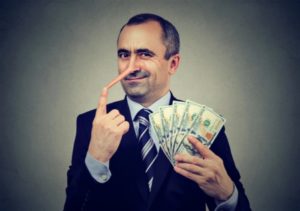 Securities brokerage firms have a duty to supervise their brokers and the sales practices of their brokers, and among other things, to review customer statements, communications and sales practices, among other things, to detect and reasonably prevent misconduct including selling away, unauthorized trading, the sale of unsuitable investments or excessive activity.
Securities brokerage firms have a duty to supervise their brokers and the sales practices of their brokers, and among other things, to review customer statements, communications and sales practices, among other things, to detect and reasonably prevent misconduct including selling away, unauthorized trading, the sale of unsuitable investments or excessive activity.
FINRA Conduct Rule 3110, specifically provides that:
Each member shall establish and maintain a system to supervise the activities of each registered representative and associated person that is reasonably designed to achieve compliance with applicable securities laws and regulations, and with the Rules of this Association. Final responsibility for proper supervision shall rest with the member.
Many courts, including the United States Supreme Court, have recognized a private cause of action for violation of NASD and NYSE Rules. See, e.g., Cook v. Goldman Sachs & Co., 726 F. Supp. 151, 156 (S.D. Tex. 1989)(private right of action under exchange rules if claim is for misrepresentation or deception); Noland v. Gurley, 566 F. Supp. 210 (D. Colo. 1983)(same); Bateman Eichler Hill & Richards v. Berner, 472 U.S. 299, n.9 (1985)(private cause of action under Section 17); Laing v. Dean Witter & Co., Inc., 540 F.2d 1107;(D.C. Cir. 1976)(noncompliance with SEC Rules provides the basis for a private cause of action); Dale v. Prudential-Bache Securities, Inc., 719 F. Supp. 1164; Emmon v. Merril Lynch, Pierce Fenner & Smith, Inc., 532 F. Supp. 480, 484 (W.D. Ohio 1982).
 Specifically, with respect to the “failure to supervise,” courts will impose civil liability, unless the broker-dealer can establish a “good faith” defense that it maintained, and enforced an adequate system of supervision. See, e.g., Smith v. Christie [1981] Fed. Sec. L. Rep. (CCH) ¶ 97,828 (N.D. Cal. 1980)(defendants meet burden of proving good faith by proving to the court’s satisfaction the adequacy of their supervision and compliance system set out in some detail); Trustman v. Merrill Lynch, Pierce, Fenner & Smith, Inc., 1984-1985 Fed. Sec. L. Rep. (CCH) ¶91,936 (C.D.) Cal. 1985). In addition, failure to comply with one’s own rules may be basis for primary liability. Thropp v. Bache Halsey Stuart Shields, Inc., 650 F. 2d. 817, 820 (6th Cir. 1981)(court relied on defendant’s failure to enforce diligently its own rules in finding defendant negligent).
Specifically, with respect to the “failure to supervise,” courts will impose civil liability, unless the broker-dealer can establish a “good faith” defense that it maintained, and enforced an adequate system of supervision. See, e.g., Smith v. Christie [1981] Fed. Sec. L. Rep. (CCH) ¶ 97,828 (N.D. Cal. 1980)(defendants meet burden of proving good faith by proving to the court’s satisfaction the adequacy of their supervision and compliance system set out in some detail); Trustman v. Merrill Lynch, Pierce, Fenner & Smith, Inc., 1984-1985 Fed. Sec. L. Rep. (CCH) ¶91,936 (C.D.) Cal. 1985). In addition, failure to comply with one’s own rules may be basis for primary liability. Thropp v. Bache Halsey Stuart Shields, Inc., 650 F. 2d. 817, 820 (6th Cir. 1981)(court relied on defendant’s failure to enforce diligently its own rules in finding defendant negligent).
Respondeat Superior Liability
In addition, a brokerage firm’s liability for the sale of unsuitable investments not only arises from its lack of effective supervision but also from the familiar principles of an employer’s vicarious liability. See Carras v. Burns, 516 F. 2d 251, 288 (4th Cir. 1975); Sharp v. Coopers & Lybrand, 649 F.2d 175 (3d Cir. 198 1 ), cert. denied, 455 U.S. 938 ( 1982). The doctrine of respondeat superior imposes vicarious liability on the brokerage firm for its broker’s misdeeds (vicarious liability may be based on respondent superior and Section 20(a)); Denten v. Merrill Lynch, Pierce, Fenner & Smith, Inc., 88 F. Supp. 176, 1 77 (N.D. Ill.1995)(brokerage firm liable under doctrine of respondent superior).
Control Person Liability
Section 20(a) of the Exchange Act of 1934, 15 U.S.C. 78t(a) provides that:
every person who directly or indirectly controls and person liable under any provision of this chapter or any rule or regulation thereunder shall also be liable jointly and severally with and to the same extent as such controlled person to any person to whom such controlled person is liable, unless the controlling person acted in good faith and did not directly or indirectly induce the acts or acts constituting the violation or cause of action.
15 U.S.C. § 78t(a); See also, Hollinger v. Titan Capital Corp., 914 F.2d 1564, 1573 (9th Cir. 1990)(“Congress adopted Section 20(a) in an attempt to protect the investing public from representatives who were improperly supervised or controlled”).
In order to establish liability under Section 20(a), a plaintiff need only allege that the controlling person had knowledge, or at least a duty to know, of the alleged wrongful activity, and the power or ability to control or influence the affairs of the controlled persons. Arthur Children’s Trust v. Keim, 994 F.2d 1390, 1398 (9th Cir. 1993); Powers v. Eichen, 977 F. Supp. 1031, 1044-45 (N.D. Cal. 1997)(“plaintiff need not show day-to-day control of affairs, only that defendants had possession of the power to influence in order to state a claim under Section 20(a)”). Hollinger, 914 F.2d at 1572 n.16 (same); Safeway Portland Employees’ Fed. Credit Union v. C.H. Wagner & Co., 501 F.2d 1120 (9th Cir. 1974) (same).
Control person liability can also result in the imposition of punitive damages. See, e.g., Platsis v. E.F. Hutton & Co., Inc., 642 F. Supp. 1277 (W.D. Mich. 1986) (liability will attach under Section 20(a) where control person exercises control in the activities or operations of the control person); Bull v. Chandler, 1987 Transfer Binder, Fed. Sec. L. Rep. ¶ 93,257 (CCH) (N.D. Cal. 1987) (participation of control person in activities of controlled person sufficient to confer liability).
Guiliano Law Group
Our practice is limited to the representation of investors. We accept representation on a contingent fee basis, meaning there is no cost to you unless we make a recovery for you. There is never any charge for a consultation or an evaluation of your claim. For more information, contact us at (877) SEC-ATTY.
For more information concerning common claims against stockbrokers and investment professionals, please visit us at securitiesarbitrations.com
To learn more about FINRA Securities Arbitration, and the legal process, please visit us at securitiesarbitrations.com
